|
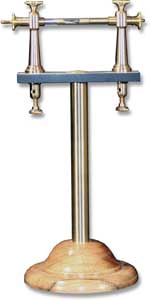
Branly Coherer
(Replica) |
A detector is a device that converts
a high frequency radio signal into a low frequency audio
signal that can be heard through headphones or amplified and
played through a loudspeaker. The very first detectors were
used only to detect the presence of an electromagnetic pulse,
since modulation hadn't been developed, and communication was
accomplished by transmitting electromagnetic pulses in Morse
code. One such detector was the Coherer,
used by Marconi in its earliest receivers.
By the early 1900's the coherer had been
replaced by various crystal technologies capable of detecting
high frequency AM radio signals By the mid-teens, vacuum
tube detectors such as the DeForest Audion were also popular.
Below are several of the detectors in my collection:
Marconi Magnetic Detectors
c. 1904
Known as the "Maggie", it was the standard detector used on
ships from 1902 to 1914. Click
here for more information.
|
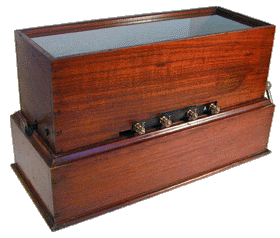
Cover in place |
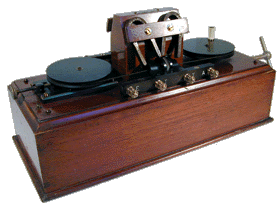
Cover removed |
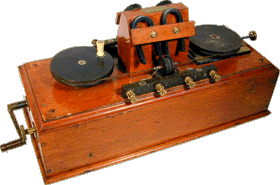
This is another Maggie I own, which has no cover. |
|
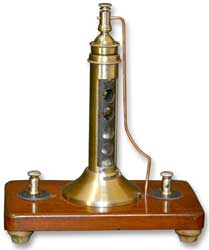
Epochet Ball Coherer
4th qtr 19th century
(German) |
The Ball coherer consists of a glass tube
enclosing several steel balls. It operates on the "dirty
contact" principle discovered by Hughes. An
adjustment at the top of the tube provides a way to vary
the pressure on the stack, thereby changing the electrical
characteristics of the detector. |
|

Lowenstein SE 183-A
Triple Detector
1917 |
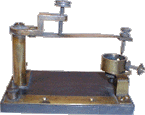
Unknown Early Crystal Detector
c. 1915 |
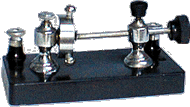
Adams Morgan
Crystal Detector
Approx. 1916 |
|
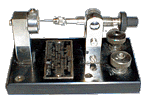
Lowenstein SE 184-A
Galena Detector
1918 |

Adams Morgan CR 1235
Si/An Detector
1919 |
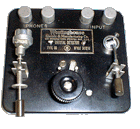
Westinghouse DB Dual Detector
1921 |
|

Kilborne & Clark
Galena Detector
Seattle, WA |
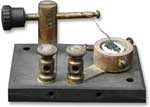
Krows Electric Co.
Galena Detector
Seattle, WA |
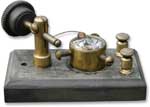
Krows Electric Co.
Galena Detector
Seattle, WA |
|
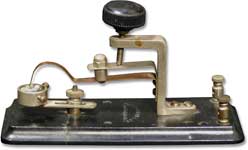
A.W. Bowman Galena Detector
Sold in 1917 by Sears,
Roebuck & Co. as the "Universal Detector Stand." |

Unmarked Early Crystal Detector |
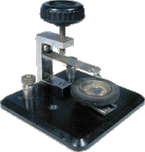
Electro Galena Detector
1914 |
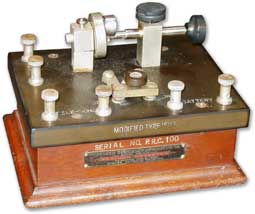
Wireless Specialty Perikon Detector |
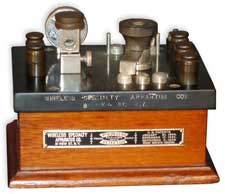
Wireless Specialty Pyron Detector |

Marconi Coherer
1895-1905
One of the first devices
used by Marconi to detect RF signals. Click
here for more
information |
|
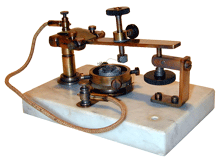
Early Unidentified Crystal Detector |

DeForest Tubular Audion
1916
Click here
for more informaton

Fleming Valve
(British)
1910
The Fleming valve is considered to be the grandfather
of all thermionic vacuum tubes. Click
here for more information.
|
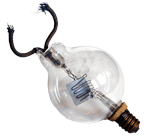
DeForest Spherical Audion
c. 1914
|